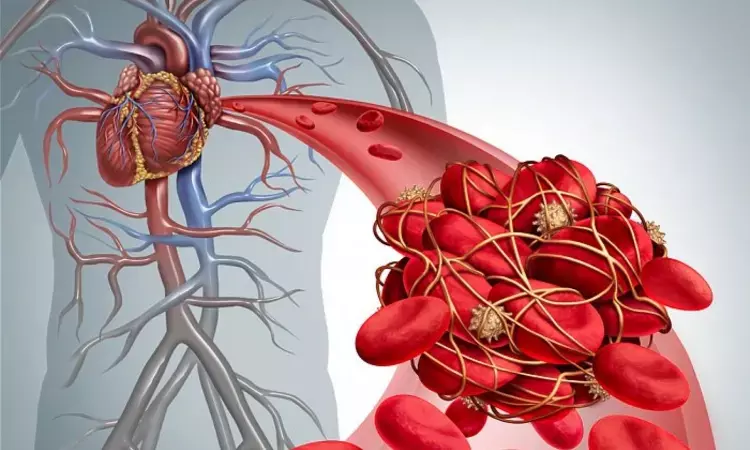- Home
- Medical news & Guidelines
- Anesthesiology
- Cardiology and CTVS
- Critical Care
- Dentistry
- Dermatology
- Diabetes and Endocrinology
- ENT
- Gastroenterology
- Medicine
- Nephrology
- Neurology
- Obstretics-Gynaecology
- Oncology
- Ophthalmology
- Orthopaedics
- Pediatrics-Neonatology
- Psychiatry
- Pulmonology
- Radiology
- Surgery
- Urology
- Laboratory Medicine
- Diet
- Nursing
- Paramedical
- Physiotherapy
- Health news
- Fact Check
- Bone Health Fact Check
- Brain Health Fact Check
- Cancer Related Fact Check
- Child Care Fact Check
- Dental and oral health fact check
- Diabetes and metabolic health fact check
- Diet and Nutrition Fact Check
- Eye and ENT Care Fact Check
- Fitness fact check
- Gut health fact check
- Heart health fact check
- Kidney health fact check
- Medical education fact check
- Men's health fact check
- Respiratory fact check
- Skin and hair care fact check
- Vaccine and Immunization fact check
- Women's health fact check
- AYUSH
- State News
- Andaman and Nicobar Islands
- Andhra Pradesh
- Arunachal Pradesh
- Assam
- Bihar
- Chandigarh
- Chattisgarh
- Dadra and Nagar Haveli
- Daman and Diu
- Delhi
- Goa
- Gujarat
- Haryana
- Himachal Pradesh
- Jammu & Kashmir
- Jharkhand
- Karnataka
- Kerala
- Ladakh
- Lakshadweep
- Madhya Pradesh
- Maharashtra
- Manipur
- Meghalaya
- Mizoram
- Nagaland
- Odisha
- Puducherry
- Punjab
- Rajasthan
- Sikkim
- Tamil Nadu
- Telangana
- Tripura
- Uttar Pradesh
- Uttrakhand
- West Bengal
- Medical Education
- Industry
Elevated homocysteine positively associated with plasma TG and remnant cholesterol: Study

China: Identifying homocysteine (Hcy) related dyslipidemia risk [both traditional lipids and remnant cholesterol (RC) residual risk] is clinically relevant in the new era where Hcy-lowering therapies are targeted to fight against dyslipidemia or even cardiovascular disease, a study has claimed.
The study, published in the Frontiers in Cardiovascular Medicine, showed that plasma Hcy was significantly associated with conventional atherogenic lipids. In addition, it was also independently correlated with RC levels beyond other lipids after controlling potential confounders.
Previous studies have shown homocysteine to be an independent risk factor for cardiovascular disease while mechanisms remain unclear. Epidemiological and experimental studies however have indicated that hyperhomocysteinemia (HHcy) affected lipid metabolism despite limited and inconsistent data.
Against the above background, Liyuan Zhou, Department of Endocrinology, Beijing Chao-Yang Hospital, Capital Medical University, Beijing, China, and colleagues aimed to investigate the association of plasma Hcy with traditional lipid profiles and remnant cholesterol in Chinese adults.
The study included a total of 7,898 subjects aged 20-79 years who underwent a physical examination at Beijing Chao-Yang Hospital in Beijing. Routine automated laboratory methods were used to measure fasting plasma total cholesterol (TC), high-density lipoprotein cholesterol (HDL-C), low-density lipoprotein cholesterol (LDL-C), triglyceride (TG), apolipoprotein A1 (ApoA1), apolipoprotein B (ApoB), Hcy, lipoprotein (a) [Lp(a)] and other metabolic risk factors.
Calculation of RC was done as TC minus HDL-C and LDL-C. The relationship between Hcy and lipids was assessed using the linear regression model and logistic regression model after adjusting potential confounders.
Salient findings of the study include:
- Of the subjects, the median level of plasma Hcy was 13.0 μmol/L and 32.3% had HHcy.
- Plasma Hcy was negatively associated with HDL-C, ApoA1, and Lp (a) and positively associated with TG levels after adjusting age, sex, body mass index, blood pressure, alanine transaminase, aspartate transaminase, creatinine, uric acid, and glucose. HHcy significantly increased the risk of low HDL-C [odds ratio (OR) 1.26].
- The net mediation effects of ApoA1 on the relationship between Hcy and HDL-C before and after adjusting confounders were 46.9 and 30.6%, respectively.
- The RC level was significantly elevated in subjects with HHcy after adjusting for other influencing factors.
- Hcy presented a positive correlation with RC levels after adjusting the above confounding factors (β = 0.073), and the correlation was still significant even after controlling other lipids, including TG, LDL-C, HDL-C, ApoA1, ApoB, and Lp(a).
"To the best of our knowledge, this is one of the largest studies to explore the association of plasma Hcy levels with conventional lipid profiles in China, and this is the first study to focus on the relationship between Hcy and RC levels in Chinese adults," the authors concluded.
"Our study showed that after adjusting all potential confounders, plasma Hcy levels were independently positively associated with TG and negatively associated with HDL-C, ApoA1, and Lp(a), they wrote. "HHcy significantly increased the risk of low HDL-C, and this effect was mediated partially by the reduction of ApoA1."
They further wrote that plasma Hcy was significantly associated with RC levels and even beyond other lipids, including TG, HDL-C, LDL-C, ApoA1, ApoB, and Lp(a).
"This study added Chinese evidence to Hcy-induced dyslipidemia and provides novel insight for the prevention and treatment of atherogenic dyslipidemia or even ASCVD risk in patients with HHcy."
Reference:
Zhou L, Liu J, An Y, Wang Y and Wang G (2022) Plasma Homocysteine Level Is Independently Associated With Conventional Atherogenic Lipid Profile and Remnant Cholesterol in Adults. Front. Cardiovasc. Med. 9:898305. doi: 10.3389/fcvm.2022.898305
Dr Kamal Kant Kohli-MBBS, DTCD- a chest specialist with more than 30 years of practice and a flair for writing clinical articles, Dr Kamal Kant Kohli joined Medical Dialogues as a Chief Editor of Medical News. Besides writing articles, as an editor, he proofreads and verifies all the medical content published on Medical Dialogues including those coming from journals, studies,medical conferences,guidelines etc. Email: drkohli@medicaldialogues.in. Contact no. 011-43720751


